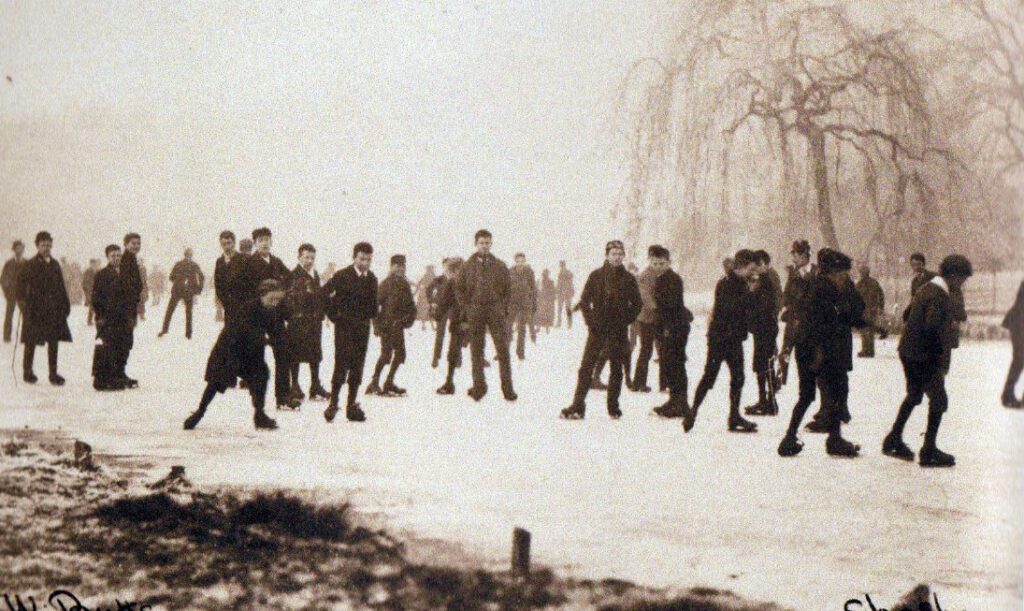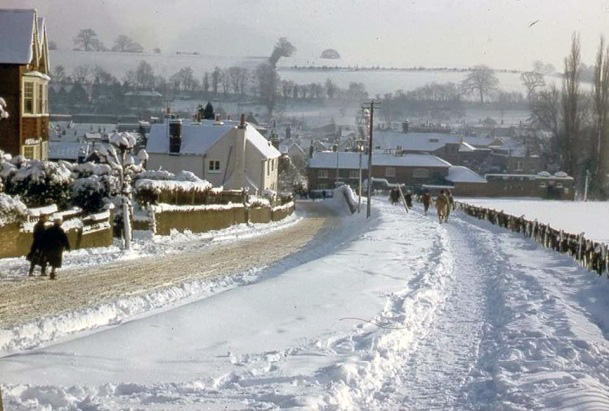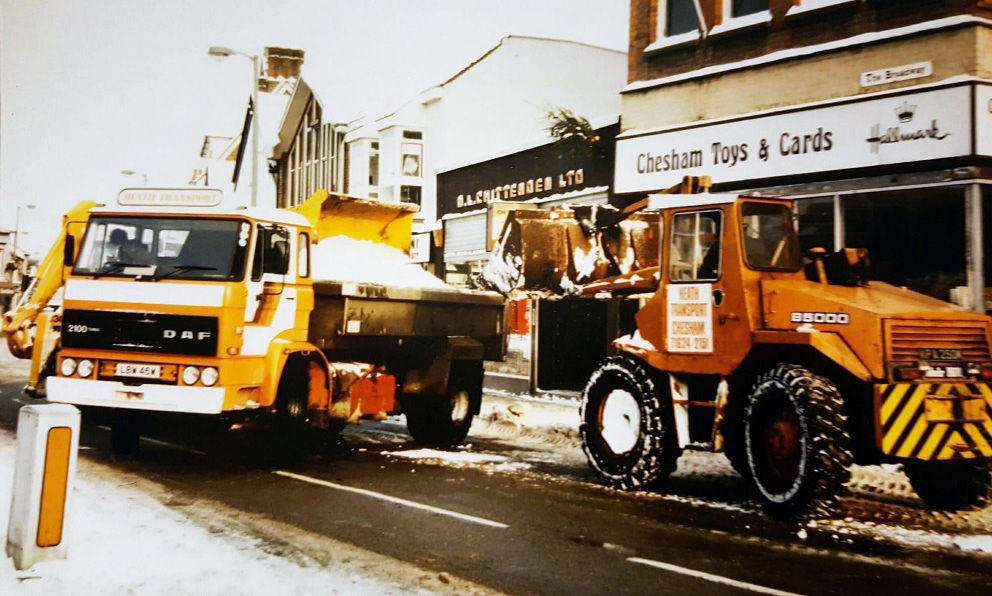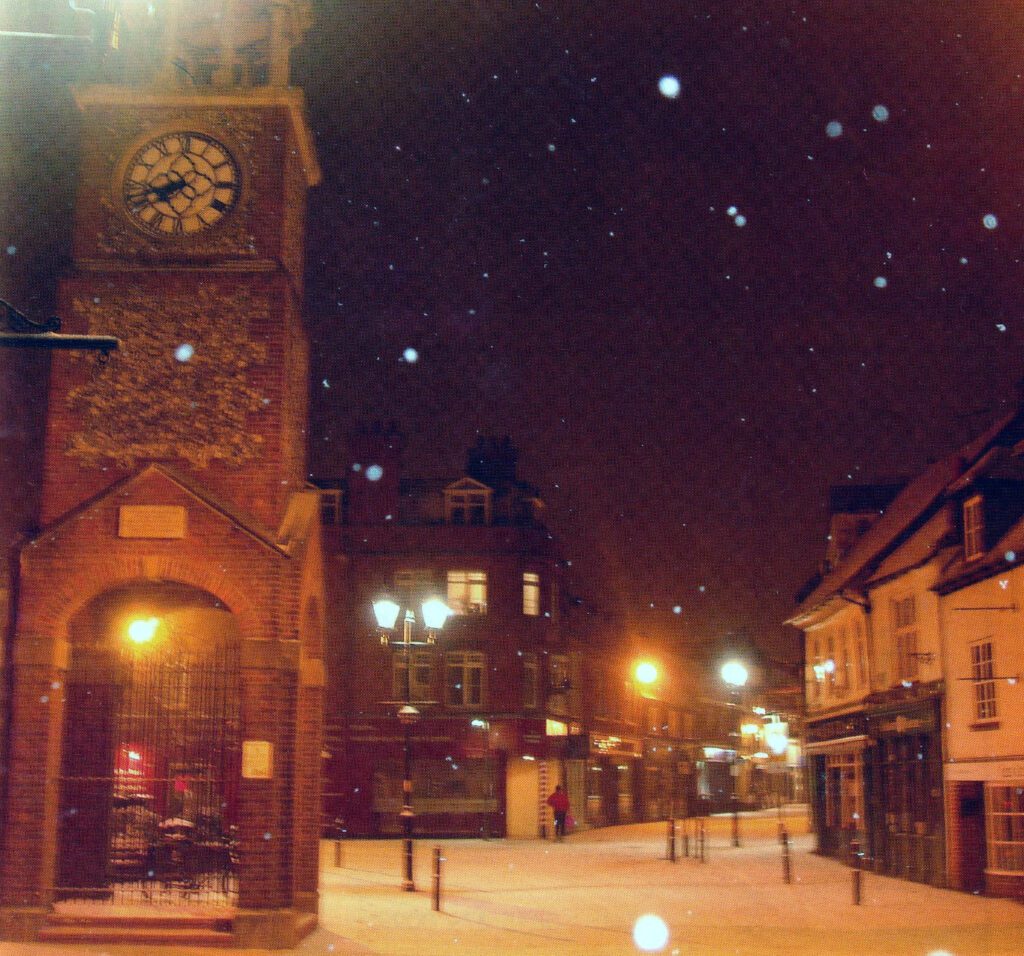Are you dreaming of a white Christmas for 2023?
Some pundits are already forecasting a white Christmas for 2023. Looking back at weather records, it becomes apparent that white Christmases here in Buckinghamshire which affected Chesham in the past were fairly unusual, but here are a few that have come to light.

1657: Snow from December until March.
1830: A spectacular White Christmas. Charles Dickens is thought to have based his “Christmas at Dingley Dell” in “The Pickwick Papers” on it. The Christmas Day temperature recorded at Greenwich was -12oC.
1836: Roads impassable – up to 15 feet of snow with drifts up to 50 feet.
1876: Amazingly snowy winter, especially in Buckinghamshire.
1906: Deep fall of snow. Six inches fell on Christmas night. This snow storm covered most of the British Isles and many parts were cut off.
1925: A surprise snowfall on Christmas Day. The weather up to Christmas and following it was mild and pleasant, but Chesham woke up on Christmas morning to a covering of “the white stuff”.

1927: Heavy snow. More detail about this snowfall to follow.
1938: Described as “the best white Christmas of the 20th century”.
1956: Up to 8 inches of snow.
1962: No snow onChristmas Day until after dark when the wind picked up and by daylight on Boxing Day, the snow was driving horizontally throughout Chesham. It didn’t stop snowing for a week, and when it did, most of the villages surrounding Chesham were cut off by snowdrifts up to 9 feet deep. The snow didn’t completely disappear until March.

1968: Heavy snow overnight which had stopped by Christmas morning.
1981 & 1982: Heavy snow in Buckinghamshire during December.

2009 & 2010: Heavy snow in Buckinghamshire during December.

There were, of course, other winters when we had snow in December, but they are not included as there is no guarantee that the snow was actually present on Christmas Day. Now back to 1927. The local press reported the following:
Snowdrifts between 4 and 10 feet deep blocked some of the country lanes and spread from hedge to hedge or were higher than the hedges. Chartridge Lane, Fullers Hill, the road to Hawridge & Cholesbury, Lye Green Road, Ashley Green, Ley Hill Road, New Road (now known as Amersham Road), and Copperkins Lane were all chock-a-block with drift snow. People walked by a snow-way over hedges.
Chicken houses were snowed under, doors blocked by drifts higher than the doorway. Snow froze and arched over roadways, so that when the road was trenched, you passed through a tunnel. In some areas, the snow drifted so high that it reached the bedroom windows of the cottages.
A postman in Bellingdon disappeared into a deep snowdrift and had to be rescued, and bus drivers and conductors carried shovels on their buses in case it should become necessary to dig the vehicles out.
In one house a large party of Christmas revellers found themselves cut off and fast running out of provisions. Fortunately some neighbours came to the rescue, as their Christmas guests had never arrived and as a result, they had plenty of food available. Other people ran out of oil and candles and the electricity was not working due to the snow.
A young man toboganning at Newtown Recreation Ground collided heavily with a fence and was taken to Chesham Cottage Hospital for treatment to an injured leg. Fortuitously, he arrived just in time for the patients’ party!
So much for snow. What about frost?
Sub-zero temperatures in Chesham at Christmas were much more common, as we see from the following – which includes records giving freezing temperatures in London as it is sufficiently close to us to apply to Chesham as well. The 18th century suffered what is generally believed to be a “mini Ice Age” as reflected in the following:
1708: The thermometer went down to -18oC and the Thames froze over. Early 1709 was a very severe winter with frost lasting for 3 months.
1715: Severe frost from November to February 1716. A “Frost Fair” was held on the River Thames.
1725/6 & 1728/9: Both winters had severe frost from mid-December to the end of January.
1739/40: This winter was extremely severe and may have been worse than that of 1715/16. The Thames was frozen for about eight weeks, and Thames shipping and London Bridge were damaged considerably by the ice.
1762: An intense frost on Christmas Day which lasted until the end of January 1763.
1783: The Thames froze over and traffic crossed the river on the ice.
1788: The frost appeared in November and there was no sign of a thaw until February 1789.
1794: More prolonged frost and temperatures dropped so low that both the Thames and Severn froze over, with “Frost Fairs” being held on the ice.
1796: Christmas Day saw a temperature of -21oC with the Thames frozen over. Temperatures became considerably milder during the 1800s and very few Christmases when there were severe frosts were recorded. This trend continued into the 1900sand it’s not until 1961 that an extreme frost is recorded at Christmas again, with temperatures falling to as low as -12oC.
1906: This was an exception when the temperature on Christmas morning was -5oC.
1978: December had started mild and wet but severe cold set in towards the end of the month and the winter of 1978/79 ended up as one of the coldest on record.
1981: As well as snow, temperatures were well below freezing for most of December. There then followed a series of very wet but mild winters, although things changed dramatically in 2010.
Our lowest ever temperature here in Chesham of course, came at Christmas 2010 when we made the record books with a temperature of -19.6oC, although the most recent Christmas with sub-zero temperatures was in 2020.


